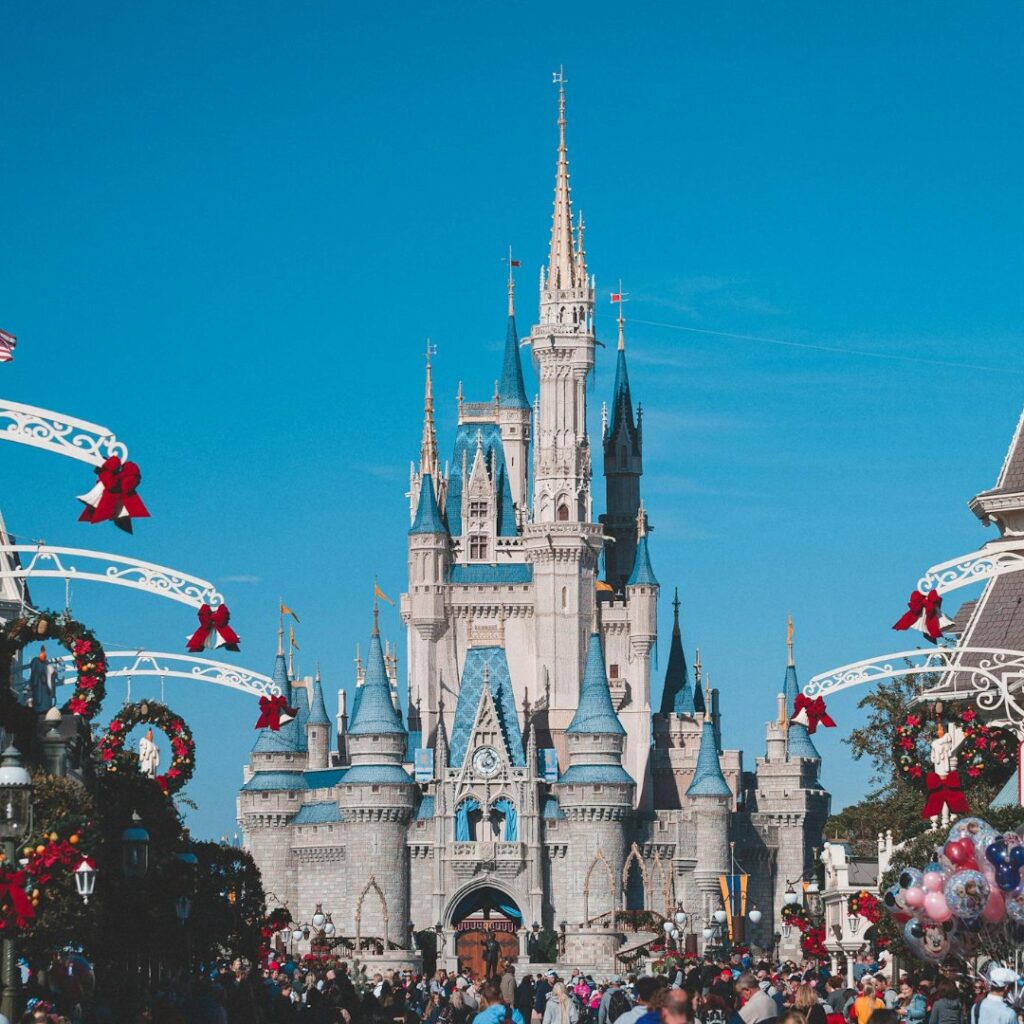Disneyland, often referred to as “The Happiest Place on Earth,” has captivated millions of visitors worldwide through its magical experiences and innovative marketing strategies. Here’s a detailed look at how Disneyland markets its brand and continues to attract and retain guests from all over the globe.
Understanding Disneyland’s Marketing Strategy
Disneyland’s marketing strategy revolves around creating immersive experiences, leveraging nostalgia and brand loyalty, utilizing digital and social media, and engaging in strategic partnerships. The core elements of Disneyland’s marketing strategy include brand positioning, target market identification, product differentiation, and integrated marketing communications.
Brand Positioning
Disneyland positions itself as a magical and enchanting destination where dreams come true. The brand emphasizes family-friendly entertainment, exceptional service, and immersive experiences that appeal to all ages.
Key Tactics:
- Emotional Appeal: Disneyland’s marketing campaigns often evoke strong emotional responses, using themes of magic, wonder, and nostalgia.
- Iconic Taglines: Slogans like “The Happiest Place on Earth” and “Where Dreams Come True” reinforce the brand’s magical positioning.
Target Market Identification
Disneyland targets families, children, and adults who are young at heart. The company tailors its messaging to resonate with these groups, highlighting the fun, adventure, and enchantment that Disneyland offers.
Key Tactics:
- Family Focus: Marketing campaigns often feature families enjoying Disneyland’s attractions and experiences.
- Broad Demographic Appeal: Disneyland’s marketing efforts cater to a wide range of age groups, from young children to grandparents.
Product Differentiation
Disneyland differentiates itself through its unique attractions, beloved characters, and high-quality entertainment. The brand offers a variety of experiences that cater to different interests and age groups.
Key Tactics:
- Exclusive Attractions: Offering one-of-a-kind rides and attractions that can only be experienced at Disneyland.
- Character Experiences: Featuring interactions with beloved Disney characters, which are a major draw for visitors.
- Themed Areas: Creating distinct themed lands within the park, such as Fantasyland, Adventureland, and Tomorrowland, each offering unique experiences.
Integrated Marketing Communications
Disneyland employs an integrated marketing communications strategy to ensure consistent messaging across all channels, including television, digital media, print, and in-person experiences. This approach helps create a cohesive brand experience for guests.
Key Tactics:
- Digital Marketing: Active engagement on social media platforms, targeted online advertising, and engaging content marketing.
- Traditional Advertising: High-profile television commercials, print ads in magazines, and outdoor advertising in strategic locations.
- Event Marketing: Hosting special events, seasonal celebrations, and exclusive experiences to attract visitors.
Celebrity Endorsements and Influencer Partnerships
Disneyland partners with celebrities and influencers to enhance its brand image and reach a wider audience. These endorsements help to create buzz and build brand credibility.
Key Tactics:
- Celebrity Visits: Highlighting visits from celebrities and influencers to generate excitement and media coverage.
- Influencer Collaborations: Working with influencers to share their Disneyland experiences and promote the park to their followers.
Customer Engagement and Experience
Disneyland focuses on providing an exceptional guest experience, from the initial planning stages to the visit itself. The company aims to create memorable experiences that encourage repeat visits and positive word-of-mouth.
Key Tactics:
- Personalized Communication: Using CRM systems to send personalized messages, offers, and updates to guests.
- Customer Service Excellence: Providing outstanding customer service through well-trained staff and guest support systems.
- Loyalty Programs: Offering exclusive benefits and rewards to loyal guests through programs like the Disney Annual Passholder program.
Innovation and Technology
Disneyland is committed to innovation and leveraging technology to enhance the guest experience. The brand continuously explores new ways to integrate technology into its attractions and operations.
Key Tactics:
- Mobile App: Providing a user-friendly app that offers features like real-time wait times, mobile food ordering, and interactive maps.
- MagicBand Technology: Implementing wearable technology that enhances the guest experience through seamless park entry, ride reservations, and payment options.
- Immersive Technology: Utilizing virtual reality (VR) and augmented reality (AR) to create more immersive and interactive attractions.
Global Reach and Localization
Disneyland has a strong global presence, with parks in the United States, France, Japan, China, and Hong Kong. The brand adapts its marketing strategies to local markets while maintaining a consistent global image.
Key Tactics:
- Localized Campaigns: Tailoring marketing campaigns to reflect local cultures, preferences, and trends.
- Global Consistency: Ensuring that the core brand values and messaging remain consistent across all markets.
- Strategic Partnerships: Collaborating with local partners to enhance market penetration and guest reach.
Disneyland’s marketing strategy is a blend of emotional appeal, innovative technology, customer engagement, and global reach. By understanding its target market, differentiating its attractions, and leveraging integrated marketing communications, Disneyland has built a strong and loyal guest base. As the entertainment industry evolves, Disneyland’s commitment to magic, innovation, and exceptional experiences will ensure its continued success and leadership in the theme park market.


